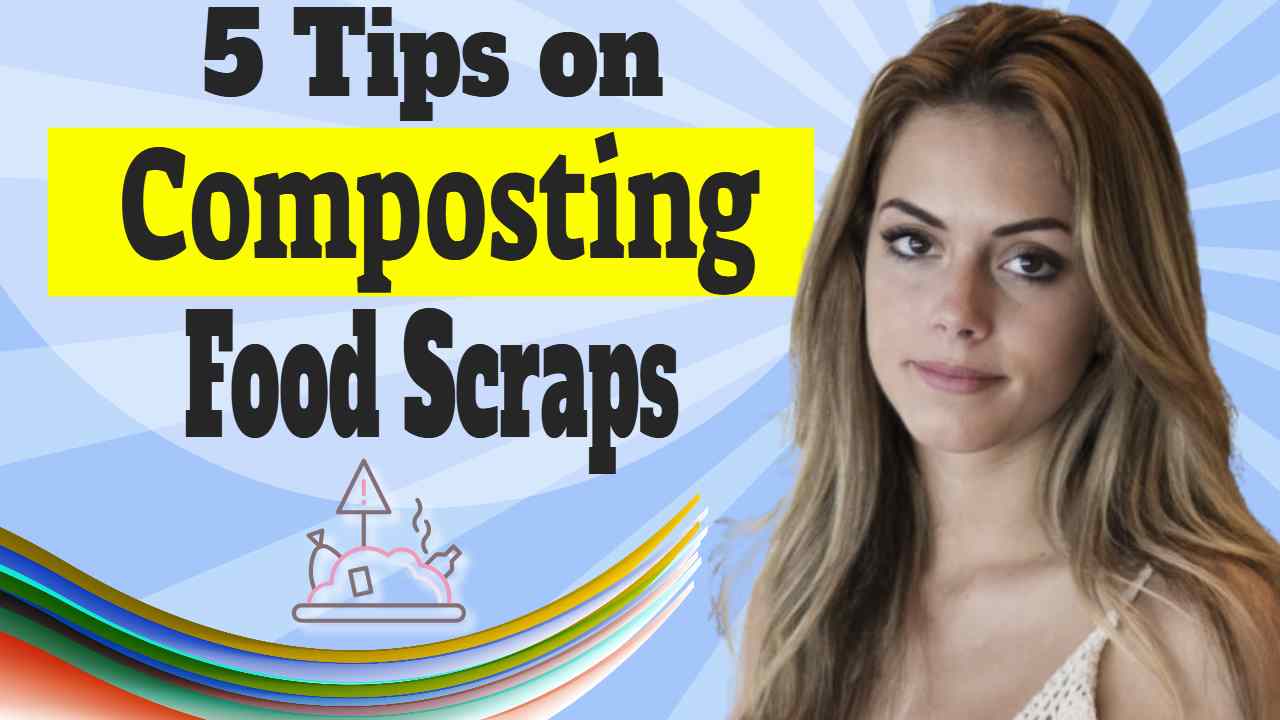Read our 5 tips on composting food scraps. To lessen the quantity of garbage that must be disposed of in landfills, composting leftover food is a crucial step that must be taken.
Composting food scraps not only lessens the amount of garbage that is sent to landfills, but it also contributes to the formation of nutrient-dense soil, which may be utilised for the purpose of cultivating fresh produce that is both nutritious and appetising. The following are a few pointers that can assist you in getting started with the process of composting food scraps.
1. Invest in a high-quality composting bin. There is a wide selection of compost bins available for purchase nowadays; thus, it is imperative that you select one that has a capacity that is adequate to hold all of your discarded food items. Additionally, ensure that the bin you select has adequate ventilation and a tight-fitting cover to prevent vermin from entering.
2. Make sure you use the appropriate components. To ensure that you have a successful composting experience, it is vital to fill your compost bin with the appropriate elements. To begin, lay down a layer of brown materials such as dried leaves, straw, or paper that has been shredded. After this, add a layer of green materials such as used coffee grounds, grass clippings, and pieces of fruit, vegetables, and other food.
3. Keep it moist. Because moisture is required for the composting process, you should be sure to add water to your compost bin on an as-needed basis. Aim for a moisture content that is between 40 and 60 percent.
4. Rotate it at regular intervals. Aerating the material in the compost and promoting the breakdown of the organic materials requires regular turning of the compost. The compost should ideally be turned once every few days.
5. Collect the finished compost. When the compost has decomposed to the point that it has a texture that is crumbly and soft, it is ready to be harvested. You can either use the compost to enhance the soil in your garden or to create potting soil that is rich in nutrients.
Composting food scraps is not only an excellent way to lessen the amount of waste that is sent to landfills, but it also contributes to the formation of nutrient-dense soil, which can be put to use in the cultivation of fresh produce that is both nutritious and appetising. You can simply make your own compost at home if you have the necessary tools and a little bit of patience, and then you may take pleasure in the fruits of your labour.
Learn How to Compost Food Waste
There are many things you can do to reduce the amount of waste you generate in your home. One thing is to learn how to compost food waste. Food waste can be one of the main contributors to greenhouse gas emissions from landfills. If you don't recycle food, you could be releasing methane into the air. This is a problem you don't want to have.
Dry brown ingredients are perfect for composting
When it comes to composting food waste, dry brown ingredients are ideal. They add bulk and are also a good source of carbon. This is particularly helpful in creating a good texture for the finished product.
For optimum decomposition, you should consider a balanced ratio of green and brown materials. The more greens and browns that you have, the more diverse the bacteria that you will see in your compost.
Some good examples of green and brown materials include fresh plant or grass trimmings, kitchen scraps, animal manures, dried leafy plant material, shredded cardboard, and hay or straw. If you are building a compost pile from scratch, a white ceramic compost pail is an easy way to store the composting materials.
Another good source of dry brown ingredients is wood chips. These are low in density and have a high surface area.
Open-air and direct methods
Composting food waste is a good way to improve the soil and reduce emissions of methane and other harmful greenhouse gases. Using this method allows you to recycle organic material without having to travel to a recycling center.
There are two main types of composting systems: open air and direct. These systems work by distributing air through tubes. They are suitable for smaller quantities of waste. However, they can be expensive to operate.
Open-air composting involves building a pile of compost outside. The aeration of the pile can be controlled via a blower. It takes about a month for the pile to mature.
Indirect composting is also an option, but it can take up to two years for the compost to become usable. During this time, the temperature of the pile increases and thermophilic microbes begin to thrive. This results in heat that is used by microbes to break down the materials.
Tumbler composting
When Composting Food Waste image in a tumbler, there are a few things you should keep in mind. First of all, it's best to choose a tumbler that is well vented. This ensures adequate air flow in the tumbler and keeps the inside smelling fresh.
Another important thing to consider is moisture. You want to make sure your tumbler has at least 50% humidity. This helps in the decomposition process and will improve the soil-nutrient balance in your yard.
Also, try to avoid adding pet droppings, bones, or oily materials to your compost. These can slow down the decomposition process.
To get the most out of your compost, make sure to rotate your bin. Rotating will help the decomposition process and can cut the composting process by a week or more.
Worm farm composting
There are several ways you can compost food waste. You can make a compost bin, set up a worm farm or create a soil bed. Whichever method you choose, you will soon be producing rich compost that can be used in your garden.
If you're looking to start a worm farm, you should get yourself a large plastic storage container with plenty of holes. Keeping the worms cool is important, and you'll want to avoid heating the bin.
Once you have the storage container, fill it with a mix of shredded paper and carbon-rich bedding material. Be sure to keep the top inch moist.
Once the contents have settled, you can move on to adding food scraps. The EPA recommends you feed your worms every two to three days. However, your worms' eating rate will vary depending on the temperature of the air, and other factors.
Methane emissions from landfills
Methane is a powerful greenhouse gas. It is at least 28 times more potent than carbon dioxide and is a major contributor to global warming. In fact, it has a larger impact on climate change than all other greenhouse gases combined.
Landfills are a major source of methane emissions. When organic waste decomposes, it produces methane and other gases. However, when a landfill's gas collection systems are not properly operating, it can leak.
A recent study found that food waste is the single biggest contributor to methane emissions. Food waste makes up 24% of material landfilled in the U.S. and embodies 170 million metric tons of carbon dioxide equivalent each year.
The United States is the third largest methane emitter in the world. The oil and gas industry, livestock, and the waste sector are all major sources of methane.


